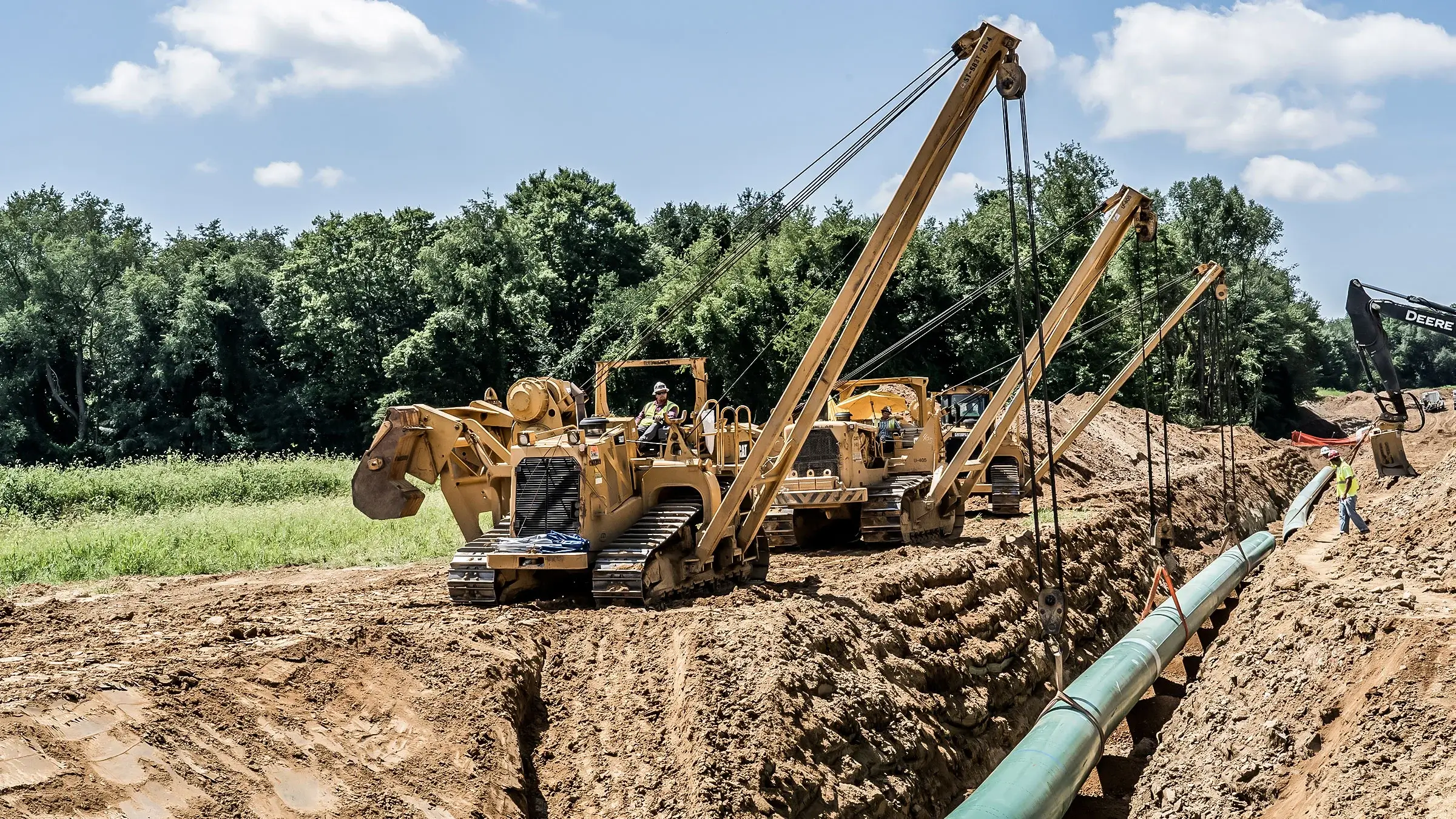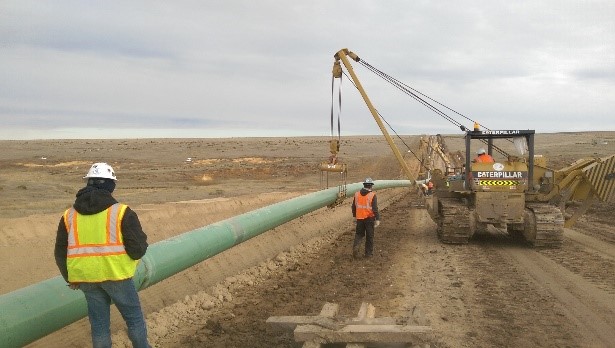What Contractors Must Understand About Creek Pipe pipeline construction
The Relevance of Pipeline Construction: Exploring the Solutions Supplied in the Industry
Pipeline construction is an essential element of modern facilities. It promotes the transportation of vital sources like oil, gas, and water. The sector includes numerous solutions, consisting of planning, site preparation, and setup. Each stage requires precision and adherence to security criteria. As areas rely on these systems for their incomes, comprehending the details of pipeline construction reveals its importance and potential obstacles. What elements affect the success of these jobs?
Overview of Pipeline Construction Services
Pipeline construction services encompass a range of specific activities developed to help with the setup of pipelines for delivering numerous materials, consisting of oil, gas, and water. These services generally include site preparation, excavation, installation of pipe sectors, and backfilling. Knowledgeable labor and advanced tools are fundamental for guaranteeing each stage is implemented with accuracy and safety.Safety procedures are extremely important, as these tasks commonly include working with dangerous materials and in difficult environments. Quality assurance actions establish that the pipelines meet sector requirements and guidelines. Additionally, the services may involve trenchless modern technology, which reduces surface disruption.Environmental factors to consider play a substantial function in pipeline construction, calling for evaluations and mitigations to secure bordering ecological communities. Generally, pipeline construction solutions are necessary for developing the facilities necessary for power and water distribution, sustaining both economic development and societal needs.
Preparation and Design in Pipeline Projects
Efficient planning and style are crucial components of effective pipeline jobs, guaranteeing that all facets are carefully addressed before construction starts. This phase includes comprehensive usefulness studies that examine the technological, financial, and environmental elements affecting the project. Engineers and developers team up to produce detailed plans that detail the pipe course, materials, and construction approaches, aligning with regulative needs and sector standards.Advanced software and modeling methods are frequently utilized to imitate various situations, enhancing the layout for efficiency and security. Ecological influence assessments are conducted to reduce prospective injury to ecological communities and neighborhoods, reflecting a commitment to sustainable methods. Furthermore, stakeholder involvement is vital, cultivating interaction and addressing concerns from affected parties. Ultimately, effective planning and style set the foundation for a pipeline job, lessening threats and making certain a structured construction procedure, inevitably adding to the total success of the procedure.
Website Preparation and Excavation
Detailed website prep work and excavation are necessary actions in the pipe construction procedure. This stage entails an in-depth evaluation of the land where the pipeline will be installed. Task groups carry out studies to identify dirt kinds, topography, and existing utility lines to guarantee a safe and effective excavation. Appropriate site preparation minimizes ecological effect and helps with smoother construction operations.Excavation adheres to, where hefty machinery is employed to get rid of soil and rock, creating a trench that fulfills the defined depth and width for the pipe. This process must abide by security regulations and ecological standards to stop damage to bordering ecosystems.Additionally, erosion control measures are applied to support the site throughout and after excavation. Efficient website preparation and excavation add considerably to the general success of pipeline tasks, laying a solid foundation for the subsequent stages of construction.
Pipeline Installation Methods
Pipeline installation techniques are essential for the effective implementation of framework projects. 2 prominent approaches include trenchless modern technology, which lessens surface area interruption, and the open-cut excavation procedure, known for its uncomplicated approach. Each technique uses unique advantages and factors to consider depending on task requirements and environmental variables.
Trenchless Innovation Approaches
While traditional methods of pipe installation commonly involve substantial excavation, trenchless modern technology methods use a much more reliable and environmentally friendly choice. These innovative techniques, such as horizontal directional drilling and pipe bursting, lessen surface area disruption by enabling the installment of pipes without extensive digging. This not only minimizes the ecological influence yet also significantly lowers labor and repair prices. Trenchless methods promote the installment of pipes in city locations where typical excavation would be impractical or damaging to existing infrastructure. Additionally, these methods can fit various soil types and conditions, making them versatile services for pipeline construction. Ultimately, trenchless technology stands for a considerable advancement in the pipeline sector, advertising sustainability and functional performance.

Open-Cut Excavation Refine
Open-cut excavation continues to be a fundamental technique in pipeline installment, identified by the direct excavation of a trench to lay pipes. This gas line install approach includes removing soil and other products to produce a trench of sufficient depth and size, enabling for the positioning of pipelines visit site at the required quality. Open-cut excavation is usually liked for its cost-effectiveness and simplicity, specifically in areas with secure dirt conditions. It can interfere with surface activities and needs cautious preparation to handle traffic and ecological influences. Precaution should be implemented to secure workers and close-by framework throughout the excavation process. On the whole, while open-cut excavation may not appropriate for all terrains, it continues to be a widely made use of method in pipe construction.
Testing and Quality Control
Evaluating and quality control are crucial parts in pipeline construction, making certain that installations satisfy well-known safety requirements and efficiency needs. Various assessment strategies and methods are utilized to examine worldly top quality and adherence to regulatory compliance. This systematic method assists recognize possible issues before they rise, safeguarding the integrity of the pipeline system.

Inspection Techniques and Techniques
Evaluation strategies and approaches are vital parts in ensuring the integrity and security of pipe construction. Numerous strategies, including visual evaluations, ultrasonic screening, and radiographic exams, are employed to spot flaws and confirm top quality. Aesthetic inspections permit the identification of surface anomalies, while ultrasonic testing uses acoustic waves to evaluate wall surface density and situate imperfections inside. Radiographic exams include X-rays or gamma rays to generate photos of the pipe's framework, exposing concealed problems. Furthermore, pressure screening is conducted to examine the pipeline's integrity under operational conditions. These approaches collectively add to an extensive understanding of the pipeline's condition, enabling timely upkeep choices and making sure conformity with market standards. Effective inspection is critical for preventing failings and promoting long-term functional safety and security.
Security Criteria Compliance
Making certain compliance with safety criteria is extremely important in pipeline construction, as it straight affects the project's total high quality and reliability. Abiding by established laws and guidelines guarantees that construction techniques reduce threats connected with pipeline installment and operation. Creek Pipe near me. Rigorous testing methods, including non-destructive screening and pressure analyses, are important in validating that pipelines can hold up against the operational stress and anxieties they will run into. Quality control actions are also necessary, as they establish a framework for regular monitoring and examination throughout new backhoe price the construction process. By focusing on safety and security standards conformity, firms not only secure employees and the environment yet also enhance the stability of the pipe, ultimately resulting in lasting functional success and public rely on the facilities
Product Quality Assessment
Product top quality evaluation plays a considerable duty in the total honesty of pipeline construction. This process includes strenuous screening and top quality assurance measures to guarantee that products meet industry standards and specs. Different examinations, consisting of tensile stamina, deterioration resistance, and weld honesty assessments, are performed to recognize any potential weaknesses. An extensive examination not just guarantees the performance of the pipe yet additionally boosts safety and security and durability over its lifespan. Additionally, implementing quality assurance protocols helps mitigate threats connected with product failures, which can result in costly repairs and ecological threats. By focusing on material quality evaluation, firms can assure conformity with regulatory requirements while cultivating self-confidence among stakeholders in the reliability of their pipe systems.
Upkeep and Repair Providers
Repair and maintenance services play an essential duty in the durability and performance of pipe systems. These services encompass routine evaluations, troubleshooting, and rehabilitative actions to address deterioration, leaks, and various other problems that may emerge in time. Knowledgeable technicians make use of advanced modern technologies such as ultrasonic screening and smart pigging to keep an eye on pipeline integrity, ensuring that any type of potential issues are recognized early.Additionally, maintenance programs often consist of set up safety nets developed to boost system reliability and minimize the likelihood of unforeseen failings. Repair services might involve the replacement of broken sections, securing leaks, or employing trenchless modern technology for marginal disruption.
Environmental Compliance and Precaution
Pipeline systems not only require continuous upkeep and repair to work effectively but likewise have to adhere to rigid ecological conformity and precaution. These guidelines are important for lessening eco-friendly impact and guaranteeing public security. Firms in the pipe construction sector apply comprehensive environmental evaluations prior to job initiation, recognizing possible threats to wildlife and ecosystems.Furthermore, adherence to security procedures secures employees and bordering neighborhoods. This consists of routine training on emergency situation response and spill prevention techniques.To maintain conformity, sectors make use of keeping track of innovations to discover leakages and various other abnormalities in real-time. Environmental administration plans are frequently developed to outline steps for dealing with unexpected issues during construction.Ultimately, rigorous adherence to ecological compliance and precaution not only fulfills lawful commitments but additionally cultivates sustainable practices within the industry, advertising an equilibrium in between framework growth and ecological stewardship.
Often Asked Questions
What Job Opportunities Are Readily Available in Pipeline Construction?
Occupation chances in pipeline construction incorporate functions such as project supervisors, engineers, welders, and safety assessors. These positions call for diverse skills, offering paths for growth in a vital sector of framework advancement and power distribution.

Exactly How Do Pipeline Projects Impact Citizen Communities?
Pipeline jobs greatly influence regional areas by influencing financial development, offering work opportunities, and boosting infrastructure. However, they might also increase problems concerning environmental impacts, land use, and potential interruptions to community cohesion and all-natural environments.
What Innovation Is Made Use Of in Modern Pipeline Construction?
Modern pipe construction utilizes sophisticated modern technologies such as GIS for mapping, drones for airborne studies, and automated welding systems to improve performance, safety, and precision, eventually facilitating the effective transportation of resources across various terrains. Creek Pipe reviews.
Exactly How Are Pipeline Construction Expenses Approximated?
Pipeline construction expenses are estimated with in-depth evaluations of materials, labor, devices, and governing requirements. Factors like surface, task dimension, and ecological considerations likewise significantly affect the total budget plan and monetary planning for construction.
What Are the Most Significant Challenges in Pipeline Construction Projects?
The biggest difficulties in pipe construction projects consist of regulatory compliance, environmental concerns, logistical issues, safeguarding financing, and handling labor shortages. Each variable can substantially affect timelines and budget plans, complicating the total execution of the job.